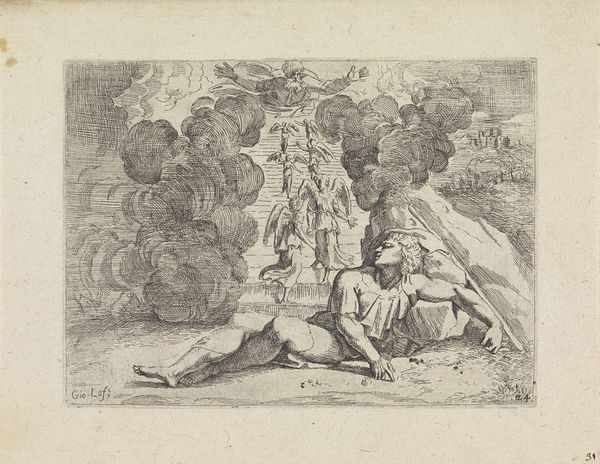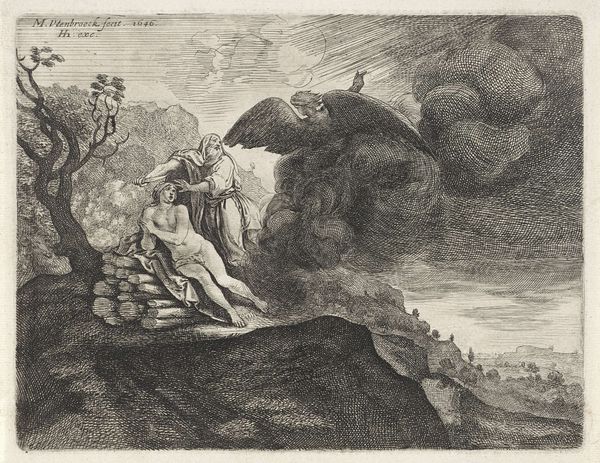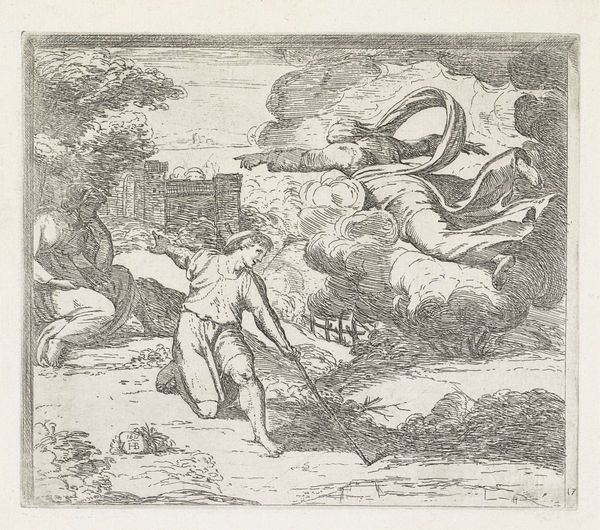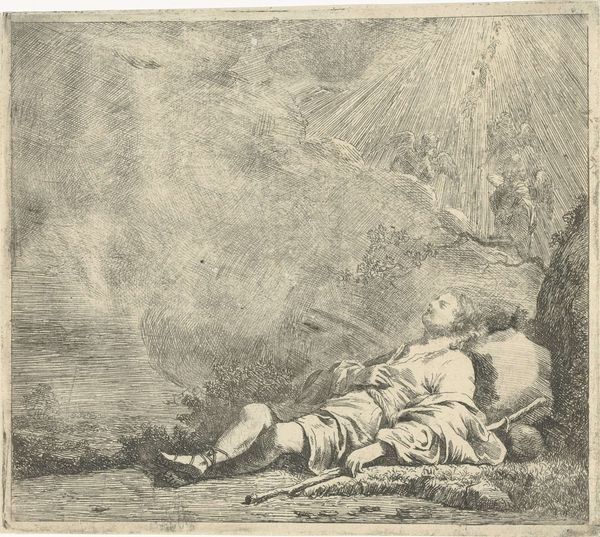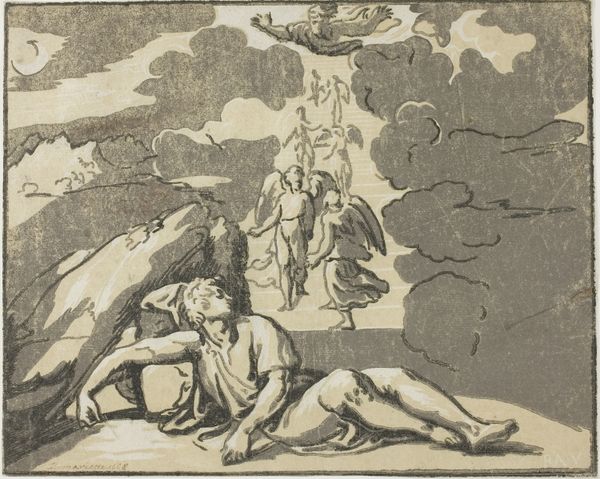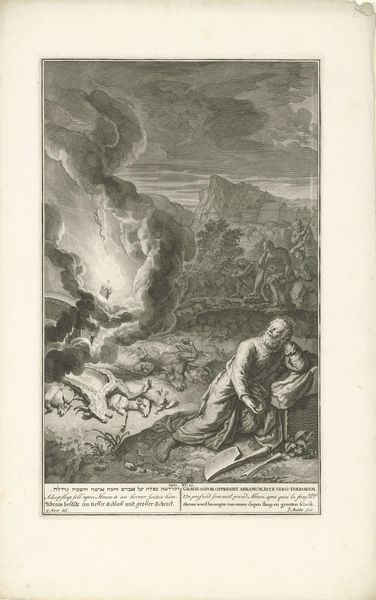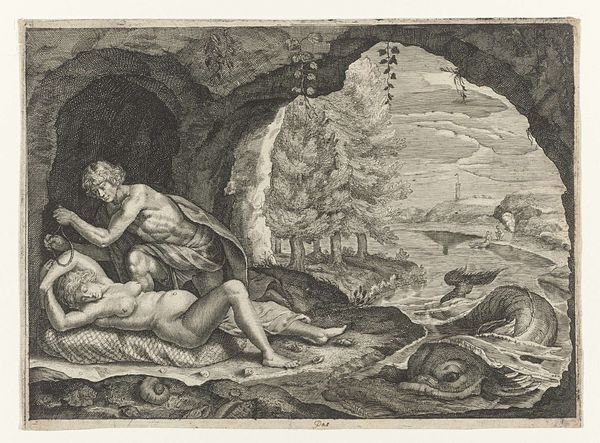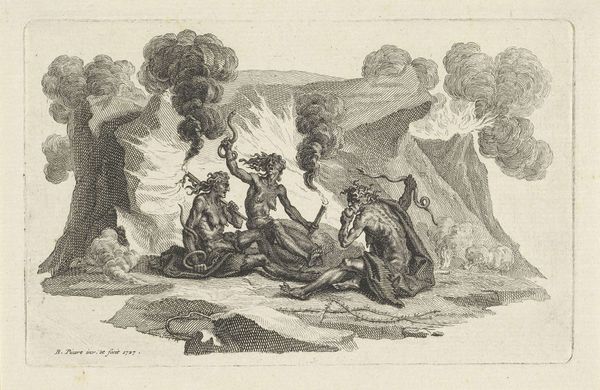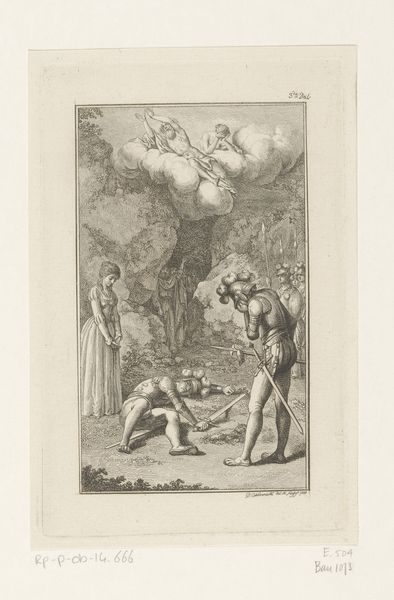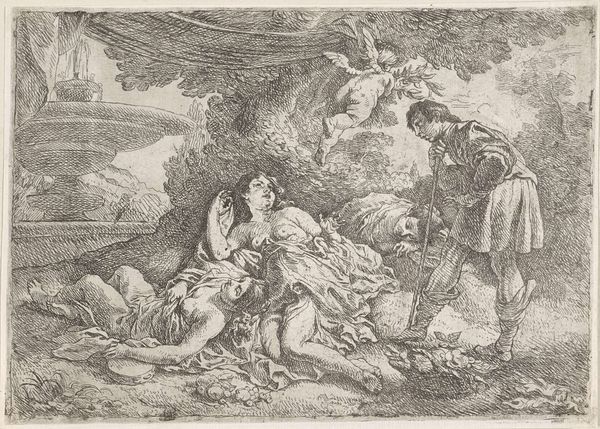
etching, engraving
#
narrative-art
#
baroque
#
etching
#
old engraving style
#
figuration
#
line
#
history-painting
#
engraving
Dimensions: height 161 mm, width 196 mm
Copyright: Rijks Museum: Open Domain
Orazio Borgianni created this etching, ‘Jacob’s Dream’, in around 1611. An etching is an image made by biting lines into a metal plate with acid, then inking the plate and running it through a press. Look closely, and you'll see how the softness of the etched line allows for rich tonal gradations in the sky and on the angel’s wings. Note how the artist has used dense clusters of lines to build up the darker areas of the composition. The etching process was especially embraced by artists of the 17th century because it allowed for a more spontaneous and expressive line than the more established technique of engraving, which relied on the strength of the artist to carve directly into the metal. Etching allowed for an immediacy in the handling of line that was similar to drawing. The printmaking enabled Borgianni to reach a much wider audience, because multiple impressions could be pulled from the plate. So while 'fine art' is often associated with unique works, here we see a more democratic impulse at play.
Comments
No comments
Be the first to comment and join the conversation on the ultimate creative platform.
